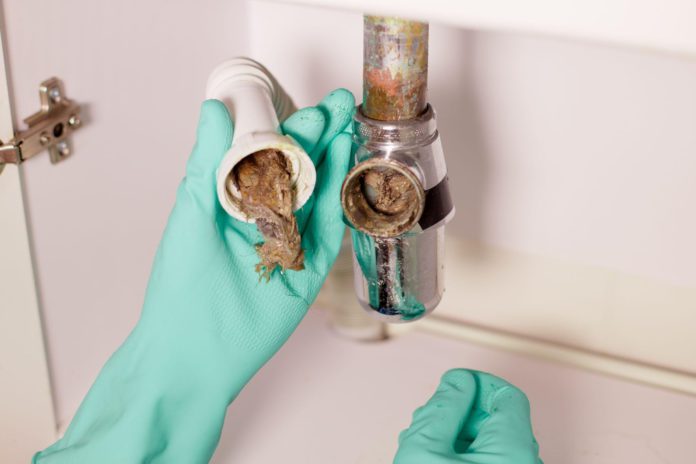Your home’s drains should flow as effortlessly as the water through downtown San Antonio’s famous River Walk. Clogged drains can seriously impact your home’s water flow, disrupting your life and even leading to expensive repairs. Follow these drain maintenance tips to help save you time and keep your plumbing system running smoothly.
H2: Understanding Your Drains
H3: The Common Causes of Clogged Drains
Several factors can cause clogged drains. Hair, grease, soap scum, wet wipes, and food particles are among the most common culprits. Understanding the common causes of clogged drains can help you prevent clogs before they become a problem.
H2: The Best Drain Cleaning Solutions
H3: Identifying the Best Drain Cleaner
Choosing the best drain cleaner is crucial when dealing with a clogged drain. There are various options available on the market, from chemical solutions to enzymatic cleaners. Many people don’t realize that different types of clogs typically require different drain cleaners.
For instance, oxidized chemical drain cleaners are the best options for kitchen sinks since they’re designed to tackle food-based clogs. Before you choose a drain cleaner, consider the type of clog you’re trying to eliminate.
H3: DIY Solutions for Drain Cleaning
For minor clogs, DIY solutions can often be effective and more environmentally friendly. While you certainly shouldn’t try to tackle an invasive plumbing issue alone, there are some DIY drain cleaning options.
For less serious clogs or slow drains, you can pour a 1/2 cup of baking soda and a 1/2 cup of vinegar into the drain. After that solution sits for about half an hour, you can run hot water down the drain to eliminate the clog. Boiling water can be even more effective, but you should only pour boiling water into sinks made of stainless steel or porcelain over steel. Many modern sinks made from acrylic materials can warp or crack. Similarly, granite and quartz can crack under boiling water. Also, if your sink has a non-code light gauge flexible plastic drainpipe underneath, it may melt from contact with boiling water.
A DIY drain cleaning tip for bathroom drains involves using a 1/4 cup of salt, a 1/4 cup of Borax, and a 1/2 cup of vinegar down the drain. Let that solution sit for about an hour or until it clears before running hot water down the drain. You can then rinse away any residue at the top of your drain with warm tap water.
H2: Professional Drain Cleaning Services
H3: When to Call a Drain Cleaning Company
In some cases, DIY solutions may not be sufficient to tackle stubborn clogs. Knowing when to call a drain cleaning expert can prevent further damage to your plumbing system.
H3: Choosing the Right Drain Cleaning Company
Selecting the right drain cleaning company is essential for quality service and peace of mind. If you have any friends or family members who have had drain cleaning performed at their home, ask them which company they used.
Spend some time researching the companies you’re considering, reading online reviews, and getting a better sense of the services they offer. Finally, call around and talk to different companies, ensuring they have the tools, knowledge, and experience to handle your stubborn drain clogs.
H2: Preventative Measures
H3: Daily Tips to Prevent Clogged Drains
Preventing clogged drains starts with adopting simple daily habits. For instance, be careful about what you’re flushing down your toilets. Even products labeled as “flushable” can cause clogs, so it’s best only to flush waste and toilet paper.
Also, ensure you’re not abusing your garbage disposal, as many kitchen drain clogs stem from these appliances. Finally, don’t ever rinse excess grease down the drain in your sink. These simple steps can help protect your drain system from serious clogs.
H3: Maintenance Schedules for Your Drains
Regular maintenance is key to preventing emergency clogs and maintaining a healthy plumbing system. In addition to the daily steps that you can take to prevent drains, it’s usually a good idea to schedule professional drain cleaning once a year or if drains begin running slower than usual. Annual cleanings remove debris and buildup from deep within your home’s drain system.
H2: Navigating Clogged Drain Emergencies
H3: Immediate Steps for Handling a Clogged Drain
When faced with a clogged drain emergency, knowing what to do can help minimize damage and restore functionality quickly. If the drain isn’t too severe, you can try using one of the DIY options discussed earlier. Also, if you have the right kind of drain cleaner on hand, you can try to use it.
If those options don’t work and you’re still dealing with slow draining or water backing up into your sink, shower, or tub, contact a professional drain cleaner to clean your drains mechanically. Stop using the affected drain until a professional can break up the clog.
H3: Understanding the Impact of Clogged Drains
Neglected drain clogs can seriously affect your plumbing system and overall home health. Severe drain clogs have the potential to cause filthy backups and water damage that leads to bacterial growth and threatens your home’s air quality and structural integrity. Even the smallest clogs can lead to nasty odors and water backing up into your sinks, tubs, showers, and toilets. These problems are why acting quickly when you notice a drain clog in your San Antonio home is so important.
H2: Keeping Your Drains Clear in the Long Run
By recognizing the common reasons for drain blockages, learning effective drain cleaning methods, and applying preventive measures, you can maintain clear drains and ensure the smooth operation of your plumbing systems.




